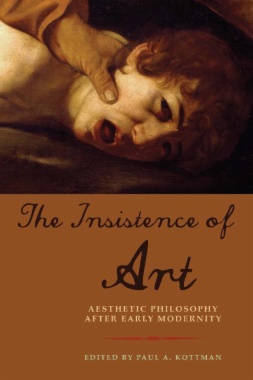Philosophers working on aesthetics have paid considerable attention to art and artists of the early modern period. Yet early modern artistic practices scarcely figure in recent work on the emergence of aesthetics as a branch of philosophy over the course the eighteenth century. This book addresses that gap, elaborating the extent to which artworks and practices of the fifteenth through the eighteenth centuries were accompanied by an immense range of discussions about the arts and their relation to one another.
Rather than take art as a stand-in for or reflection of some other historical event or social phenomenon, this book treats art as a phenomenon in itself. The contributors suggest ways in which artworks and practices of the early modern period make aesthetic experience central to philosophical reflection, while also showing art’s need for philosophy.
- Cover
- THE INSISTENCE OF ART
- Title
- Copyright
- CONTENTS
- Introduction. The Claim of Art: Aesthetic Philosophy and Early Modern Artistry�������������������������������������������������������������������������������������
- 1. Allegory, Poetic Theology, and Enlightenment Aesthetics�����������������������������������������������������������������
- 2. Object Lessons: Reification and Renaissance Epitaphic Poetry����������������������������������������������������������������������
- 3. How Do We Recognize Metaphysical Poetry?��������������������������������������������������
- 4. Literature, Prejudice, Historicity: The Philosophical Importance of Herder’s Shakespeare Studies����������������������������������������������������������������������������������������������������������
- 5. Reaching Conclusions: Art and Philosophy in Hegel and Shakespeare���������������������������������������������������������������������������
- 6. “All Art Constantly Aspires to the Condition of Music”—Except the Art of Music: Reviewing the Contest of the Sister Arts����������������������������������������������������������������������������������������������������������������������������������
- 7. The Beauty of Architecture at the End of the Seventeenth Century in Paris, Greece, and Rome�����������������������������������������������������������������������������������������������������
- 8. Strokes of Wit: Theorizing Beauty in Baroque Italy������������������������������������������������������������
- 9. Goya: Secularization and the Aesthetics of Belief�����������������������������������������������������������
- 10. Remembering Isaac: On the Impossibility and Immorality of Faith��������������������������������������������������������������������������
- List of Contributors���������������������������
- Index������������

